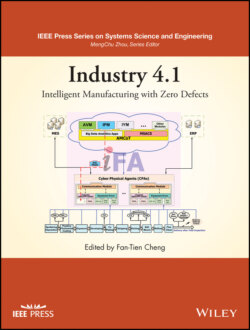Читать книгу Industry 4.1 - Группа авторов - Страница 52
2.3.2 Cleaning
ОглавлениеThe second step, data cleaning, emerges after acquiring the segmented signals. Data cleaning effectively handles raw sensing signals with noises. Basically, a process observed and recorded via signals might contain a series of stationary and non‐stationary components, especially in a machinery manufacturing environment. If the properties of the process that generate the events do not change in time, then the process is defined as stationary.
The nonstationary process (such as edge, peak, break, and noise embedded in sensing signals) includes anything that does not satisfy the conditions for stationary. These result in low signal‐to‐noise (S/N) ratios of the raw data collected from sensors, and thereby affect the diagnosis or prediction accuracy.
Data cleaning attempts to cancel the noise in signal and improve the S/N ratio to prepare for post‐processing. Generally, data cleaning can be done by using various time‐domain or frequency‐domain techniques. Trend removal and wavelet thresholding methods are respectively introduced below.
